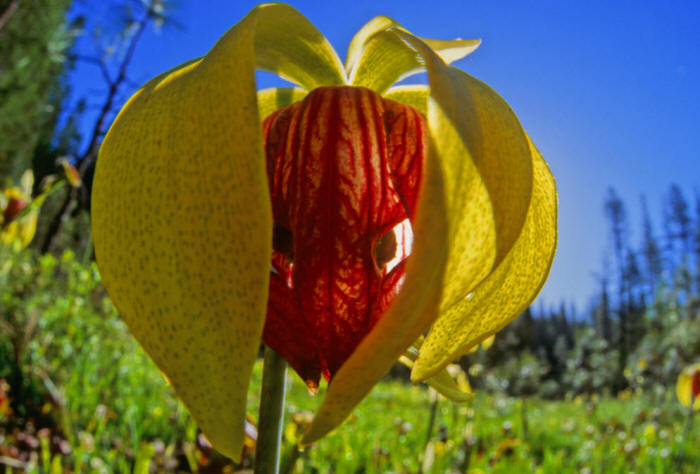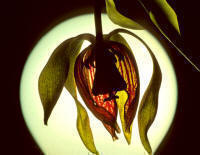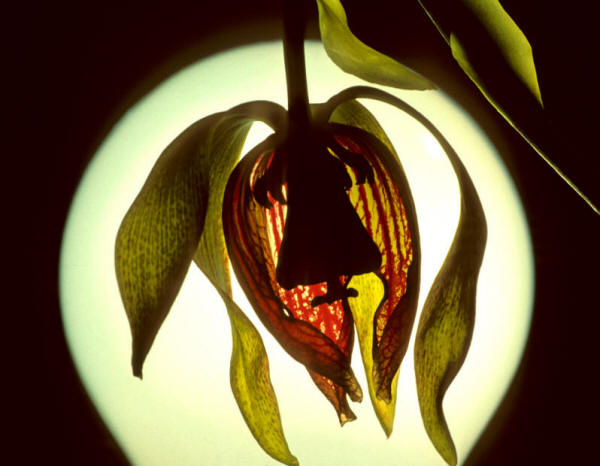|
Carnivorous Plants Story
|
||
|
|
Darlingtonia californica Closer.... Come closer. For some unknown reasons, there are only small number of field sightings of any pollinator entering the flower. The colorful, but admittedly odd-looking flower has a elongated, spherical corolla with heavy red venation. Yellow sepals hang gently over the red corolla. Each of the five petals has a slight notch on both sides. This forms a circular hole around the spherical corolla. These five holes serve as the pollinator entrance, or so we speculate. The bottom of the enlarged ovary where the stigma projects is partially seen through the holes.
re, as well as in cultivation, flies, ants, and spiders are a typical meal for the Venus flytrap. A nectar band just below the marginal spines creates an irresistible lure for the potential prey. Because of the stiff spines around the lobe, it is impossible to lick the nectar from outside. The nectar seeker is forced to position itself between the trap lobes. Three pairs of innocuous-looking bristles grow on the inner surface of the lobes. The visitor to the Venus' diner has no way of knowing what will precipitate if these sensitive hairs are disturbed.
as well as in cultivation, flies, ants, and spiders are a typical meal for the Venus flytrap. A nectar band just below the marginal spines creates an irresistible lure for the potential prey. Because of the stiff spines around the lobe, it is impossible to lick the nectar from outside. The nectar seeker is forced to position itself between the trap lobes. Three pairs of innocuous-looking bristles grow on the inner surface of the lobes. The visitor to the Venus' diner has no way of knowing what will precipitate if these sensitive hairs are disturbed.
When the trigger hairs on the inner surface
of the trap lobes are stimulated, the clam-shell-shaped trap closes suddenly ---
often in less than a half second --- fast enough to capture such agile insects
as a fly quite comfortably. Intermeshing marginal spines effectively prevent the
prey's escape. After the initial rapid closure, the insect's struggle inside the
trap further stimulates the trigger hairs, causing the trap lobes to close even
more tightly. In a day or so, the trap is seen tightly sealed around the
free margins of the lobes, with the marginal spines pointing outwardly. The
digestive fluids start to ooze into the now sealed trap cavity. As the digestive
process progresses, the products of digestion are swiftly absorbed through the
leaf and are carried away to the other parts of the plant. Introduction Venus Flytrap Sundews Pitcher Plants Cobra Plant Butterworts Bladderworts
|
|


